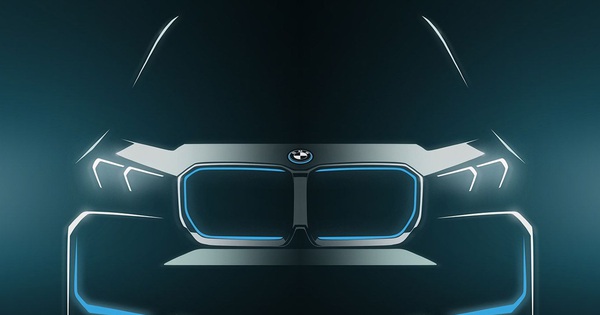NASA plans to launch a spacecraft to Mars to bring samples back to Earth in the next few years, controversially about the risk of foreign bacteria entering.

NASA’s Perseverance robot takes a selfie next to a rock it drills to sample. Image: NASA/JPL-Caltech/MSSS
NASA is planning the first mission to bring Martian soil back to Earth. However, before this important event takes place, NASA needs to find a way to protect the blue planet from any alien bacteria “attached” to the specimen, NPR reported on 4/5. This week, NASA is holding public meetings and receiving feedback on its plan to land a Mars sampler spacecraft at the US Air Force test site in Utah in the early 2030s.
“This is possibly the most important environmental assessment that humans have ever made. I think the chance of life on the Martian surface is very low. But it’s still possible,” said Peter Doran, a geologist at Mars Louisiana State University, an expert on life in extreme environments, said.
Bringing rock samples from Mars to Earth will help scientists perform comprehensive tests in the laboratory, looking for evidence of whether this cold, harsh planet was once suitable for life, even life. whether or not a living organism exists.
No one has yet thought about exactly how to handle the Martian specimen, Doran said, with questions like how to store latent bacteria, or what specific features are needed for a safe lab. Will the whole contain the rocks?
“Until recently, we didn’t focus much on the details of the facility for the return specimen because we didn’t think it was going to happen,” he explains.
But for now, work seems to be progressing rapidly as NASA works in partnership with the European Space Agency (ESA) and plans to launch sample recovery spacecraft as early as 2027 and 2028. To prepare in advance, Perseverance – the NASA robot that landed on Mars last year – has pre-drilled samples and stored them in metal tubes.
“We now have eight models on the robot,” said Jim Bell, a planetary scientist at Arizona State University and a member of the team responsible for Perseverance.

Simulation of a sample container launched into orbit from the Martian surface. Image: NASA/JPL-Caltech
NASA is planning to safely collect the specimen. First, the spacecraft will land on Mars and launch a container containing previously collected rock samples into orbit around the red planet. Once in orbit, this container is placed into another container, storing anything that has ever come into contact with the Martian environment inside. The crate will then be sealed and the lock heat sterilized, according to Brian Clement, a planetary protection expert at NASA’s Jet Propulsion Laboratory (JPL).
“We’re going to use extremely high temperatures, in excess of 480 degrees Celsius. We want to disrupt any biomolecules that might cause disturbing activity,” says Clement.
However, this is a technical challenge because the scientists also want to keep the rock sample as cold as it was on Mars. “This is like soldering a metal lunch box while trying to keep the lunch inside delicious and cool,” explains Clement.
The sterilized container is then placed in another container, sealed, and returned to Earth on a ship. This ship will eventually land in the Utah desert without a parachute.
“We wanted to compare it with a ball fast 145 km/h, where landing is the glove. Landing at 145 km/h, like with a baseball, is completely within the realm of possibility. of the Earth landing system,” added Clement.
Still, some experts find the plan unsettling. “We’re going to bring samples back to the Utah desert, just like Genesis’ solar wind sampling mission. The ship crashed into Utah and broke up,” said Barry DiGregorio, an expert at the International Committee Against Mars Sample Return. , speak. He expressed concern about disease-causing organisms from other planets arriving on Earth.
Several groups of experts have weighed in on the risks of bringing Mars samples back to Earth over the years, and all agree that the potential risk is extremely low, according to Clement. Even so, NASA is still very cautious. “Anything that comes into direct contact with the Martian environment will be sealed or disinfected before being returned to Earth,” he asserted.
Bell is not concerned about the possibility that Martian pathogens in the rock could escape into the environment and cause trouble or spread disease. He said that any living organism on Mars is not suitable to exist on Earth because they have evolved in a separate biosphere. “We’re talking about a completely different ecosystem, a completely different biosphere. And of course, we don’t know yet whether there is a biosphere on Mars,” he said.
For Bell, the primary risk of the container bursting or leaking was to contaminate precious Martian samples with material on Earth. That is why samples need to be opened in high-tech facilities with the ability to simulate the Martian environment and atmosphere.
Although the surface of Mars is now very dry, cold and subject to intense ultraviolet radiation, it is still possible for bacteria to exist in sheltered cavities and holes, or under dust, according to Doran. “The possibility is not zero, although it is very unlikely. We will definitely have to work on protecting the Earth, at least on the first missions, until we know what is there,” Doran said.
Even with a lot of problems to solve, the prospect of bringing soil and rock from Mars to Earth still excites scientists like Bell. “I want to see those things with my own eyes. We’ve been looking at this world through the eyes of robots for too long. I want to see the famous red dust, want to see the insides of rocks and small particles – things probably formed in a humid environment 3 or 4 billion years ago,” he said.
Thu Thao (According to NPR)
at Blogtuan.info – Source: vnexpress.net – Read the original article here



